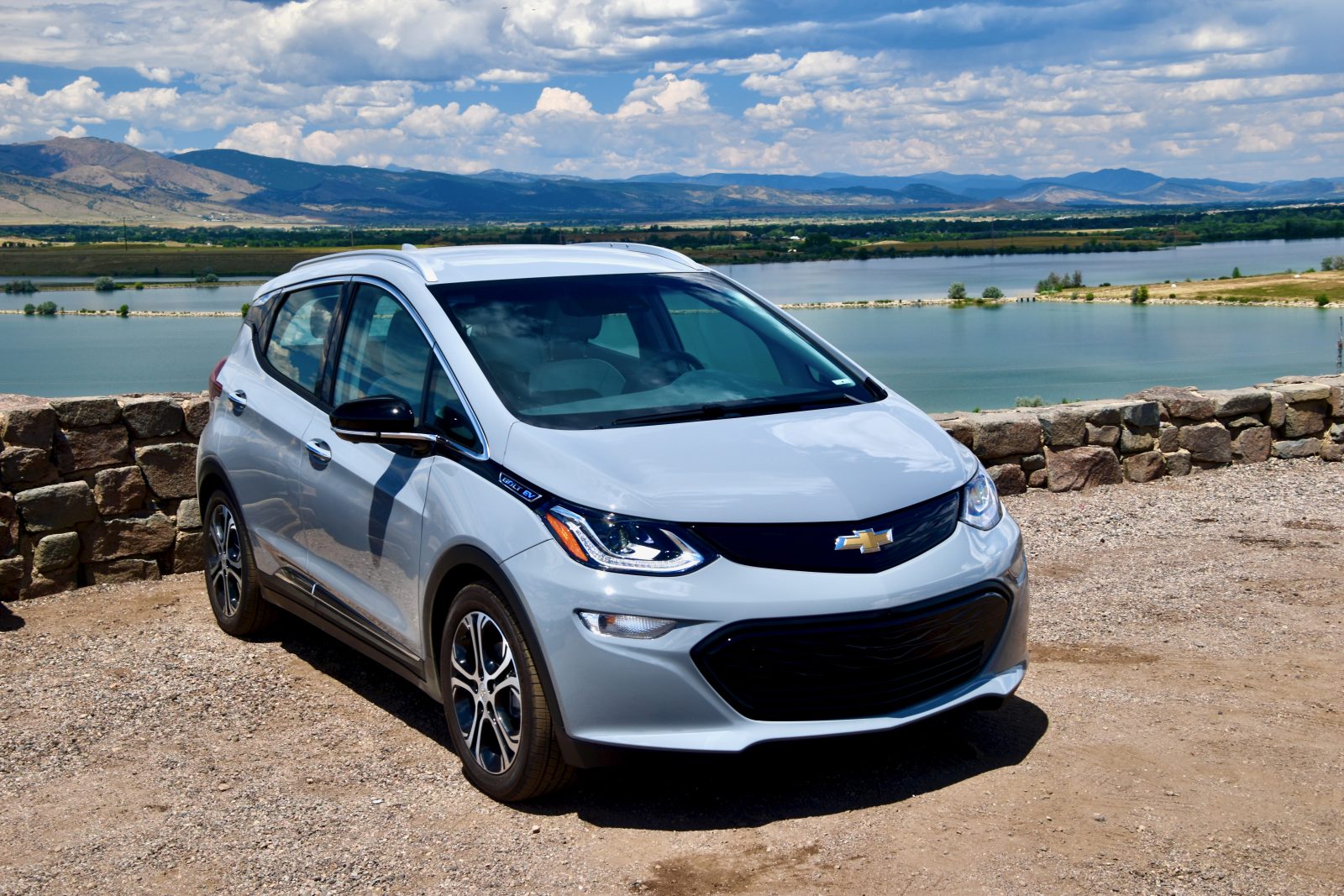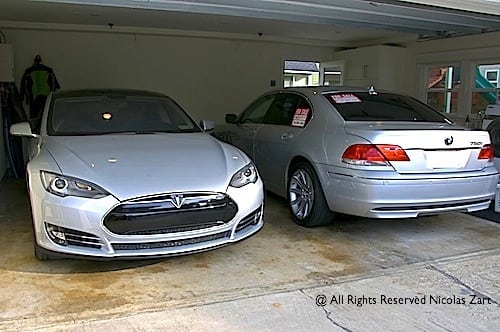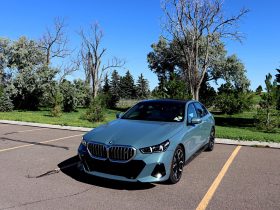For a short few months following its launch in 2016, the Chevrolet Bolt was the best electric hatchback the US dollar could buy. It cost roughly as much as the Fiat 500E and first-gen Nissan Leaf, but offered almost triple their respective ranges, and in a less polarizing package to boot. But since, the Leaf has gotten a major redesign, Mini has hit the market with its own electric hatch, and Tesla launched the Model 3. Being a sedan, though, and lacking the long-promised $35,000 entry-level model, the Tesla doesn’t belong among the answers to the following question: which is the best entry-level electric hatchback available in America? Is it still the (newly upgraded) Bolt?
As someone who has driven all three, I say the answer to that depends on what you need out of an electric car.
Quick Specs & Info |
|||
| 2020 Chevrolet Bolt | Class: Compact Hatchback EV | ||
| Base Model | As Tested: Premier | ||
| Powertrain | Electric Vehicle | Powertrain | Electric Vehicle |
| Base MSRP | $36,620 | MSRP as tested | $42,860 |
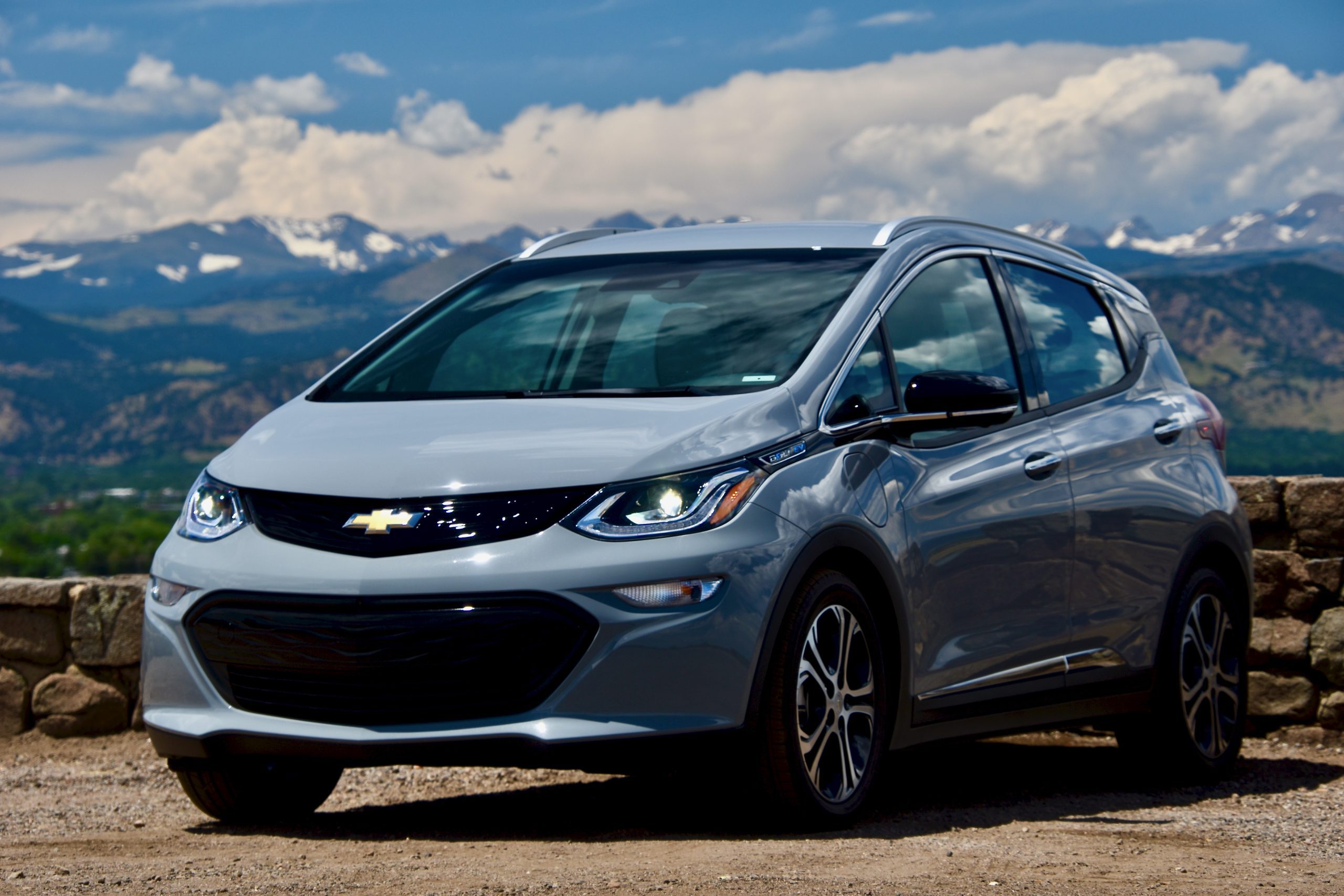
Overview
Larger than the Mini Cooper SE, but still smaller than the Nissan, the Bolt is roughly on par with the latter power-wise, though it trades some horsepower for torque. Improved for model year 2020 by a 10% larger battery, now 66 kilowatt- hours, the Bolt boasts an EPA-estimated range of 259 miles. This remains the best among the (admittedly fragmented) electric hatch segment, and the Bolt still undercuts the long-range Leaf Plus on price, all while including a longevity- enhancing battery cooling system the Leaf lacks. On paper, the comparison looks fairly close, but with eyes and hands on each model, their differences rapidly become apparent.
Exterior and Interior Design
Like the Leaf, the Bolt’s exterior design is modest for an electric vehicle; it declares itself as such only with a handful of blue badges. Its intricate taillights are a charming detail, though the pastel-ish Slate Gray Metallic is as cold as the winters in Michigan, where the Bolt is assembled. Said winter’s influence on this
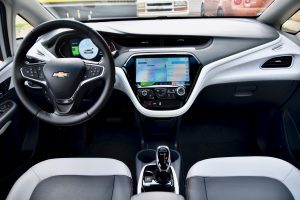
Bolt Premiere’s interior is obvious, as all five seats and the steering wheel are heated, though the climate control is a bit basic. It’s single-zone only, and doesn’t chill the interior as quickly as a 98o day will make you wish.
As tech goes, the Bolt is equipped handily, with passive safety systems, two USB ports per row, an AUX jack, and a nifty rear-view mirror whose dimmer switches it to a rear-view camera. This view reveals what’s at your five and seven o’clock, making the goings-on of traffic jams easier to follow. The digital dashboard is slightly busy, but the Apple- and Android-compatible infotainment system’s interface is modern and intuitive, and responds quickly to touches of its 10.2-inch screen. Audio quality is, as you’d hope of a nearly 44,000-dollar Chevy, terrific.
While the interior styling embodies the optimistic futurism of downtown Detroit, its glossy presentation can’t fully distract from some rough edges. For what a Bolt Premiere costs, its interior finish is underwhelming, with cheap plastic surfaces that do a better impression of a Mitsubishi than a BMW. The center console is deep, but too narrow to hide sizable valuables like cameras, and neither the cupholders nor seats feel America-sized. As an American male of statistically average height, I felt overlarge for the driver’s seat, and in the second row, the problem was compounded by a roofline that is anything but grownup-friendly. The cargo area, too, didn’t feel worthy of the mid-forties price tag, as its upper floor feels on the frail side, and was slightly obtuse to adjust.
Driving the Chevrolet Bolt
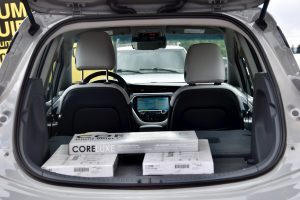
Because the Bolt is driven from so far back in the vehicle—the driver’s seat is almost in the wheelbase’s center—it’s a slightly strange car to maneuver. It further threw me for a loop by lacking its competitors’ strong throttle-liftoff regenerative braking, which is a feature I have grown to like, and missed even more every time I pressed the Bolt’s jerky brakes. Throttle response, on the other hand, is smooth and progressive, and steering weight is pleasantly heavy, though it offers little road feel, which the Bolt could use given how easily it squeals its tires. Though those hard, 480-treadwear Michelins may deserve some credit for the Bolt’s superb range, though they can struggle to put down full power, even in dry conditions. Between the tires, unrefined brake input, and suspension that could afford to be softer, the Bolt might not be sure-footed enough to make a good car for the winter, where smoothness is paramount to safety.
Strong Points
- Biggest battery in its class means both a longer driving range and service life.
- Infotainment system that Ford could stand to learn from.
- A conventional driving experience that’s ideal for electric car skeptics.
Weaknesses
- The least fun to drive of the electric hatchbacks.
- Only middling for comfort, with that weak climate control and tight interior.
- Perhaps too conventional for those already on board with electric cars.
Conclusions
Because of its conventional driving and ownership experience, and big, range anxiety-quelling battery, the Bolt is at its best as an electric car for people on the fence about owning one. Test drive one, and you’ll probably be less wary about owning something like it in the future. But prior EV converts, won’t find much novel about it, and may instead be better off turning to Mini’s, Nissan’s, or soon, Kia’s offerings—as the electric Soul isn’t too far out. And while these three have their polarizing traits, such are inevitable when you’re less concerned about being everything to everyone, like Chevrolet is with the Bolt.


